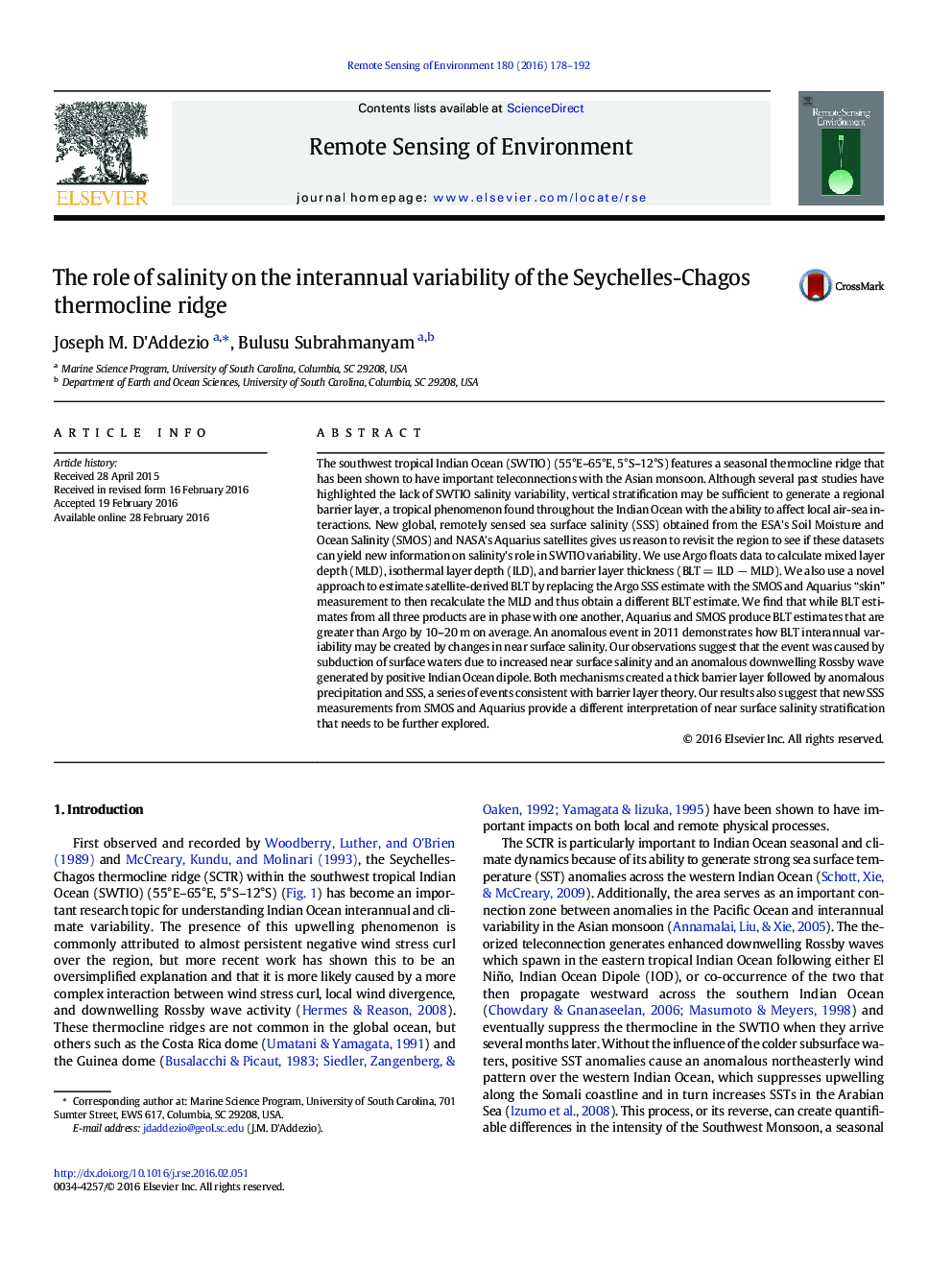| کد مقاله | کد نشریه | سال انتشار | مقاله انگلیسی | نسخه تمام متن |
|---|---|---|---|---|
| 6345164 | 1621220 | 2016 | 15 صفحه PDF | دانلود رایگان |
- This study emphasizes the use of SMOS and Aquarius salinity data.
- This study highlights the role of salinity on SWTIO.
- This study looks into physical mechanisms and dynamics in this region.
The southwest tropical Indian Ocean (SWTIO) (55°E-65°E, 5°S-12°S) features a seasonal thermocline ridge that has been shown to have important teleconnections with the Asian monsoon. Although several past studies have highlighted the lack of SWTIO salinity variability, vertical stratification may be sufficient to generate a regional barrier layer, a tropical phenomenon found throughout the Indian Ocean with the ability to affect local air-sea interactions. New global, remotely sensed sea surface salinity (SSS) obtained from the ESA's Soil Moisture and Ocean Salinity (SMOS) and NASA's Aquarius satellites gives us reason to revisit the region to see if these datasets can yield new information on salinity's role in SWTIO variability. We use Argo floats data to calculate mixed layer depth (MLD), isothermal layer depth (ILD), and barrier layer thickness (BLT = ILD â MLD). We also use a novel approach to estimate satellite-derived BLT by replacing the Argo SSS estimate with the SMOS and Aquarius “skin” measurement to then recalculate the MLD and thus obtain a different BLT estimate. We find that while BLT estimates from all three products are in phase with one another, Aquarius and SMOS produce BLT estimates that are greater than Argo by 10-20 m on average. An anomalous event in 2011 demonstrates how BLT interannual variability may be created by changes in near surface salinity. Our observations suggest that the event was caused by subduction of surface waters due to increased near surface salinity and an anomalous downwelling Rossby wave generated by positive Indian Ocean dipole. Both mechanisms created a thick barrier layer followed by anomalous precipitation and SSS, a series of events consistent with barrier layer theory. Our results also suggest that new SSS measurements from SMOS and Aquarius provide a different interpretation of near surface salinity stratification that needs to be further explored.
Journal: Remote Sensing of Environment - Volume 180, July 2016, Pages 178-192
